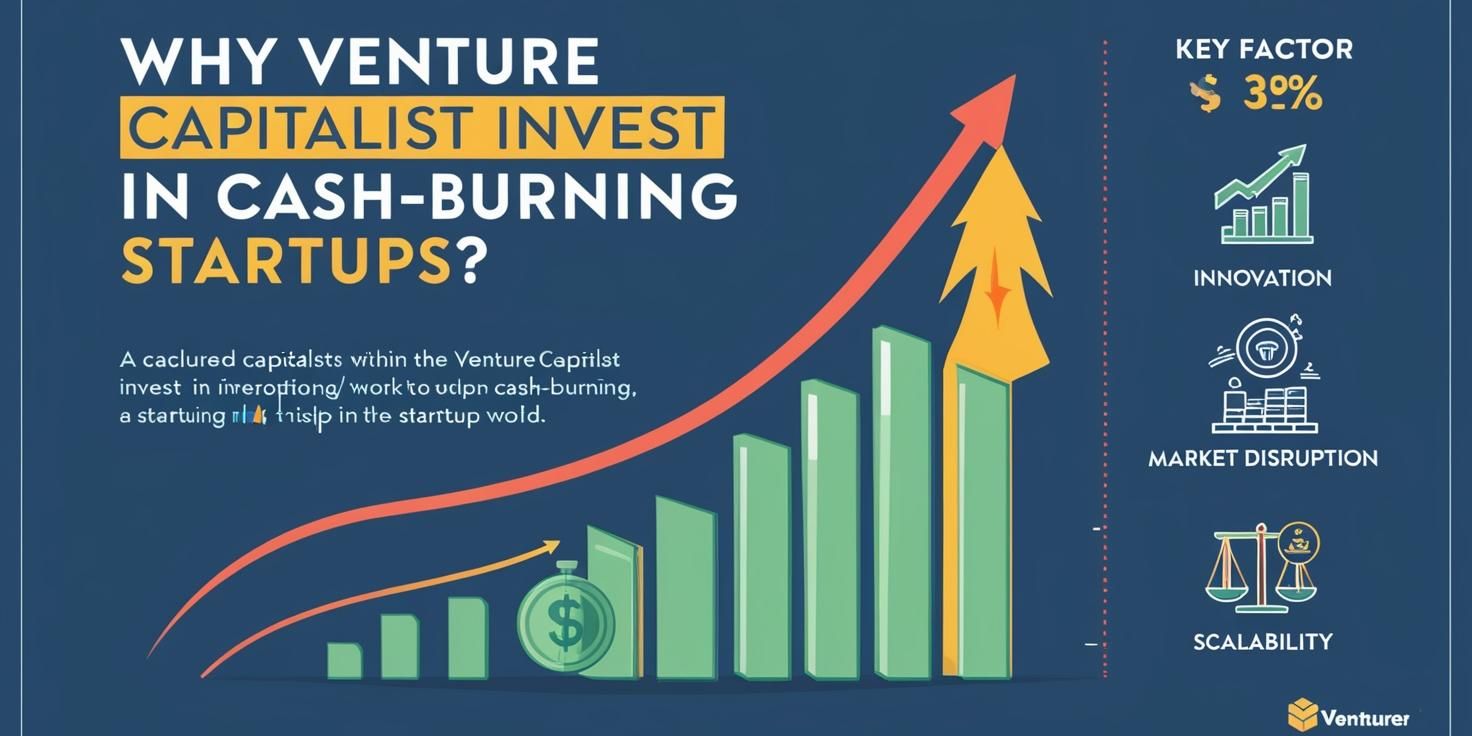Why Venture Capitalists Love Startups That Burn Cash 💸 (And How to Do It Right)
Master

Why Do Venture Capitalists (VCs) Want Startups to “Burn Cash”?
Venture capitalists (VCs) often encourage startups to “burn cash” because it aligns with their growth-focused investment strategy. This approach emphasizes rapid scaling, market dominance, and achieving a high valuation in a relatively short timeframe, even at the expense of short-term profitability. Here’s a detailed explanation of why VCs favor cash burn:
1. Rapid Growth and Market Dominance
• VC Perspective: VCs want startups to grow quickly, capture market share, and establish themselves as leaders in their industry. This often requires aggressive spending on customer acquisition, product development, and marketing.
• Reason: Startups operating in competitive markets need to outpace rivals by being the first to scale, create brand recognition, and establish network effects.
• Example: Uber burned cash heavily in its early days to subsidize rides and build a user base, outpacing competitors like Lyft in many markets.
2. Building a Competitive Moat
• VC Perspective: Cash burn can help startups invest in technology, infrastructure, and unique capabilities that create barriers to entry for competitors.
• Reason: VCs view early spending as an investment in long-term defensibility. This could mean developing advanced tech, securing exclusive partnerships, or building a loyal customer base.
• Example: Amazon in its early days burned cash to build logistics infrastructure, which now serves as a major competitive advantage.
3. Prioritizing Growth Over Profitability
• VC Perspective: For high-growth startups, profitability is often less important than revenue growth, user acquisition, or other metrics that indicate scaling potential.
• Reason: VCs bet on startups achieving a future exit event (e.g., IPO, acquisition) at a high valuation, which is often driven by growth metrics rather than immediate profits.
• Example: Airbnb focused on scaling its platform and user base globally before turning its attention to profitability.
4. Leveraging Venture Funding
• VC Perspective: Startups raise capital from VCs to spend it strategically, not to hoard it. Cash burn demonstrates that the startup is using the funding to achieve growth milestones.
• Reason: If a startup isn’t burning cash, it might signal to VCs that the founders aren’t ambitious enough or aren’t deploying resources effectively.
• Example: A SaaS startup may burn cash to hire a larger sales team and accelerate customer acquisition, even if it results in negative cash flow initially.
5. Testing and Iterating at Scale
• VC Perspective: Startups need to experiment, fail fast, and optimize their strategies at scale. This requires funding to test different markets, products, or go-to-market strategies.
• Reason: A higher burn rate enables startups to iterate faster, which is critical in dynamic and fast-moving markets.
• Example: Tesla burned cash heavily while scaling manufacturing and iterating on its products to achieve global market success.
6. Establishing Network Effects
• VC Perspective: For platform businesses, spending to grow the user base and attract more participants (buyers, sellers, or users) can create network effects that make the platform more valuable over time.
• Reason: Network effects lead to exponential growth and a competitive edge that justifies the high burn rate.
• Example: Facebook burned cash early on to attract users and advertisers, which eventually solidified its dominant network.
7. Raising the Next Round
• VC Perspective: Startups need to hit specific growth milestones to raise their next round of funding at a higher valuation.
• Reason: A high burn rate can help startups achieve rapid revenue growth, user acquisition, or product development, increasing their attractiveness to future investors.
• Example: Startups with steep growth curves often secure larger Series B or C funding rounds due to their demonstrated ability to scale.
8. Driving Valuation Through Growth Metrics
• VC Perspective: High valuations in the venture capital ecosystem are often based on growth metrics like ARR, GMV, or user numbers rather than profitability.
• Reason: VCs prioritize metrics that indicate future potential rather than current financial stability.
• Example: SaaS startups with rapid ARR growth, even at high cash burn rates, often command higher valuations in funding rounds.
Risks of Cash Burn
While VCs encourage startups to burn cash, it comes with risks:
1. Runway Dependency: Startups must ensure they don’t run out of cash before achieving key milestones or raising the next round.
2. Sustainability Concerns: Excessive cash burn without tangible results can lead to failure, especially in uncertain economic conditions.
3. Dilution Risk: Raising more funds to sustain cash burn can dilute founders’ equity significantly.
Conclusion
VCs encourage startups to burn cash as a strategic move to prioritize growth, scalability, and market dominance over short-term profitability. However, startups must manage their burn rate wisely, ensuring they achieve measurable milestones that justify their spending. Balancing aggressive growth with financial discipline is key to long-term success in the startup ecosystem.